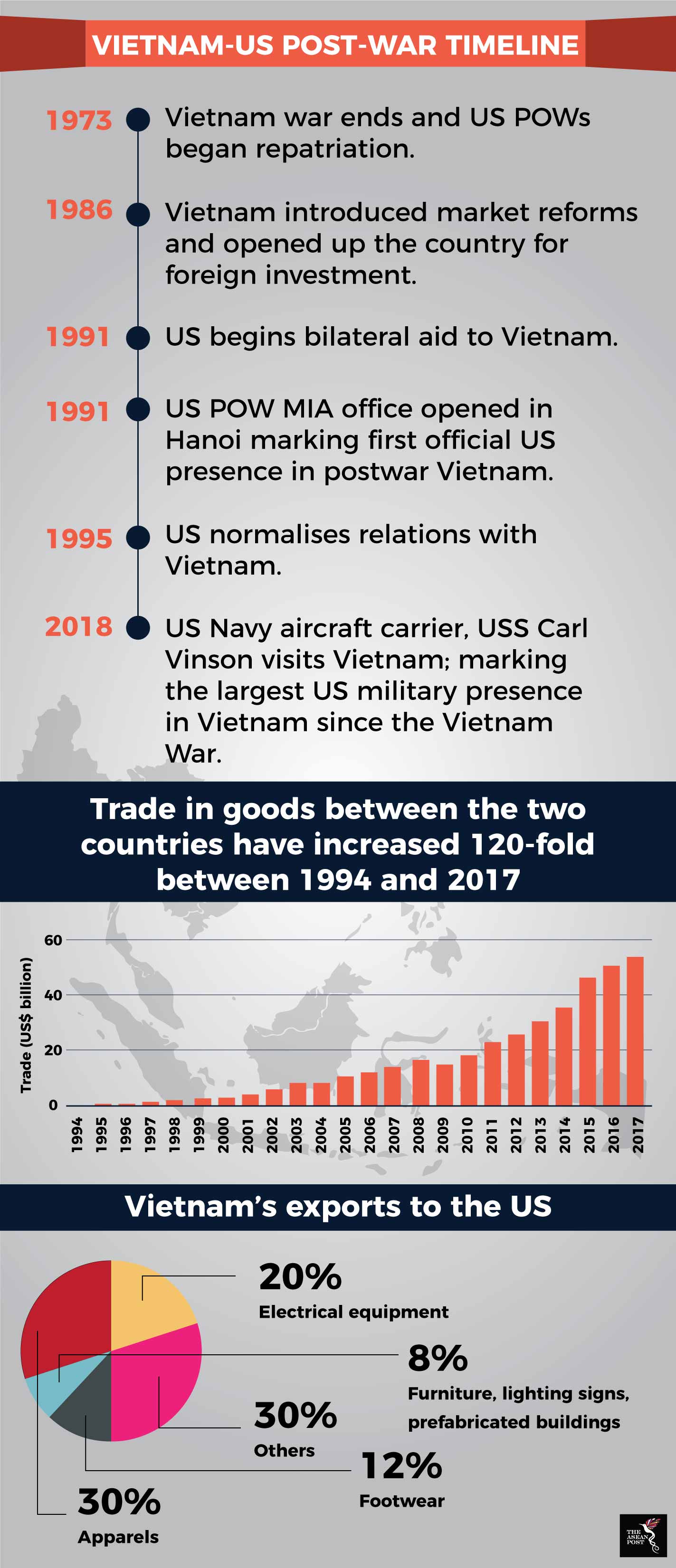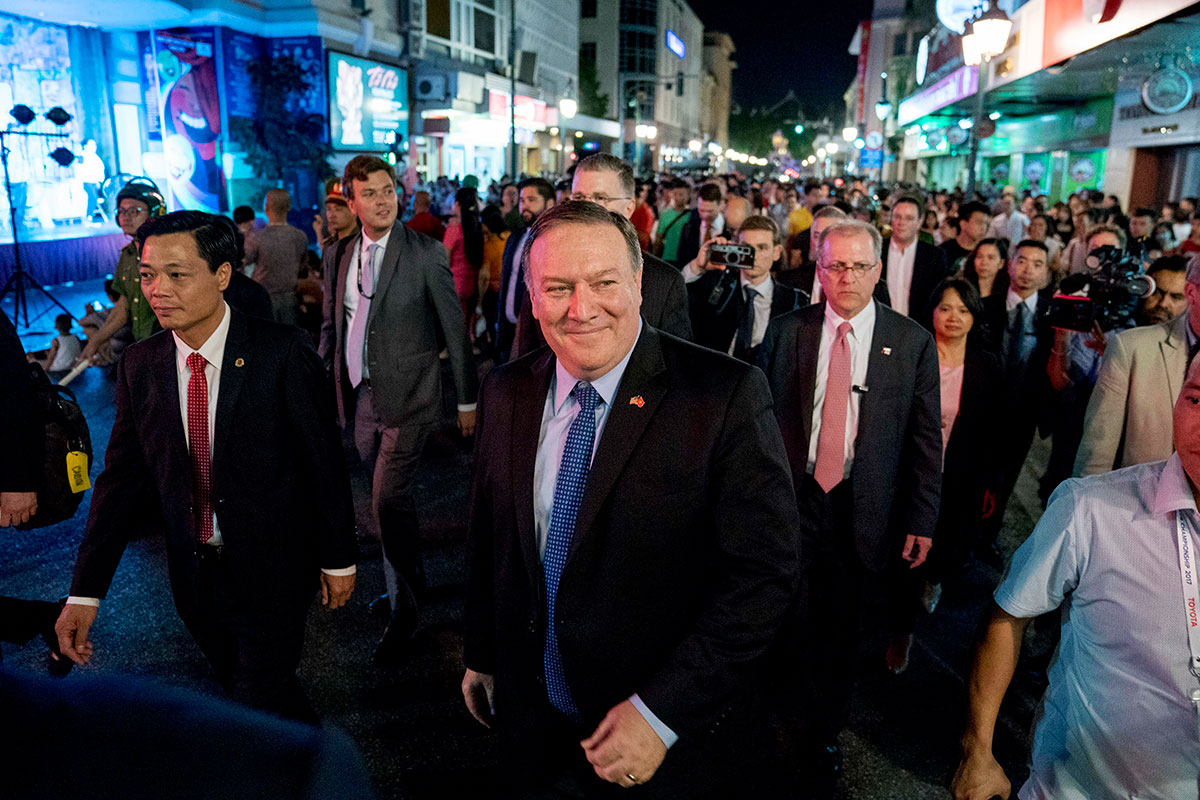Over the weekend, talks on denuclearisation between United States (US) Secretary of State, Mike Pompeo and Pyongyang seemed to have elicited differing reactions from both sides. Pompeo hailed the talks as having “made progress on almost all of the central issues” whereas North Korea slammed Washington’s “gangster-like” approach towards forcing unilateral disarmament and called the talks “regrettable.”
The point of contention had always been the term “denuclearisation.” Where Washington wants a “complete, verifiable and irreversible dismantlement” (CVID) of Pyongyang’s nuclear capabilities, Kim favours a gradual process of political normalisation and the reduction of US military presence in the Korean Peninsula and not the Libyan model of a complete surrender of its nuclear arsenal.
For long, Pyongyang has had its reservations with the Libyan model – given Libyan dictator Muammar Gaddafi’s fate when he dismantled his state nuclear program. Moreover, the Trump administration’s tendency to suggest that North Korea’s denuclearisation process should follow the Libyan model has raised the ire of the Kim regime and almost led to Pyongyang pulling out of the historic 12 June meeting.
If the Libyan experience is too controversial an approach for the North to accept, there is a different model that has been touted about of late – Vietnam.
Why Vietnam?
In his speech in Hanoi after departing from Pyongyang, Pompeo urged Kim’s regime to replicate Vietnam which bolstered its engagement with the US after the devastation of the Vietnam War. He pointed to how the former communist nation which was then an enemy of the US is now a thriving economic partner.
US-Vietnam trade has since grown 8,000 percent over the last decade. In 2007, both nations signed a bilateral agreement to expand and deepen bilateral trade and investment ties. Hence, following that logic, if both countries could set aside their ideological disparities and wartime differences and work together, North Korea could potentially do the same for the sake of its own future.
“I say all of that because it's important, but I hope that the United States, that one day we can share the same relationship with North Korea,” Pompeo remarked.
“In light of the once-unimaginable prosperity and partnership we have with Vietnam today, I have a message for Chairman Kim Jong Un,” he said. “President Trump believes your country can replicate this path.”
“It's yours if you'll seize the moment. The miracle could be yours. The choice now lies with North Korea and its people,” he proclaimed.

Source: Various sources
Reality or a far-fetched dream?
By the looks of it, North Korea is already on a similar path as Vietnam. At the end of the Vietnam war, improvement of ties between Hanoi and Washington began with the reparations of the remains of US prisoners of war (POW) and missing in action (MIA) personnel.
Likewise, the Singapore declaration signed at the end of the Trump-Kim summit included a commitment on both sides to return the remains of US soldiers who went missing in North Korea during the 1950-53 Korean War. A little more than a week after the summit, Trump said that Pyongyang had repatriated the remains of 200 US soldiers who went missing during the war. According to the Department of Defense POW/MIA Accounting Agency nearly 7,700 US servicemen are still unaccounted for from the Korean War and close to 5,300 are believed to be in North Korean territory.
However, there is a stark difference between Vietnam’s post-war experience and North Korea’s current situation – Vietnam was never a nuclear power and it is of less strategic importance to China than North Korea.
Hanoi never had a nuclear arsenal to use as leverage when negotiating with the US. On the contrary, the party which assumed leadership after the war – and is still in power until today – needed as much economic assistance as it could get in order to remedy its wartime economic plight. The country did initially experiment with the Chinese agrarian based socialist economic reform model but ultimately resorted to the western model of market reforms. Known as Doi Moi, the reforms prioritised the creation of a market economy and avenues for foreign investment and private sector competition. In that vein, Vietnam eventually normalised relations with Washington and improved its trade relations with its former foe.
North Korea on the other hand, doesn’t require a complete overhaul of its economic system. For many decades, it was reliant on Beijing for economic support and aid. Thanks to its geographic proximity with China, it was in Beijing’s best interests to help sustain the North Korean economy which acted as a buffer state between the US’ close ally, South Korea. Outside of that, North Korea often employed a plethora of illicit ways to fund the running of its government and its nuclear programs including the drug trade, cybercrime and illegal weapons sales. Combined, it allowed Pyongyang to develop weapons-grade nuclear capabilities that it used to its advantage to squeeze as much as it could from the US.
Current talks between North Korea and the US are also attributed to economic sanctions on the North which the Trump administration claims is what brought them to the talking table in the first place. Nevertheless, in light of Pyongyang’s historical ties with China, it is more likely that Kim’s regime would opt for a Dengist-like Chinese model as opposed to a Vietnamese one. After all, given that Beijing has been the economic lifeline of the North for years, they would be first on the list of recipients to enjoy a larger share of investments in the country should Pyongyang open up.
